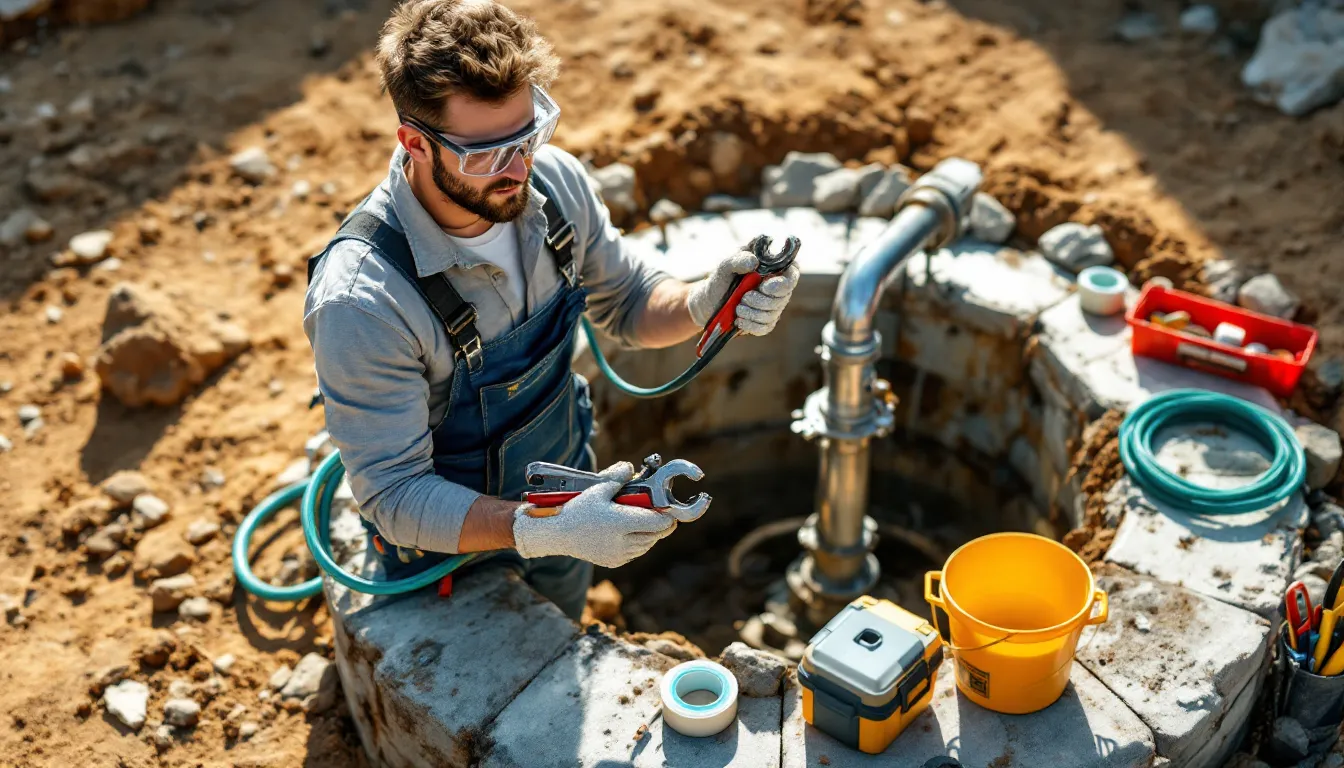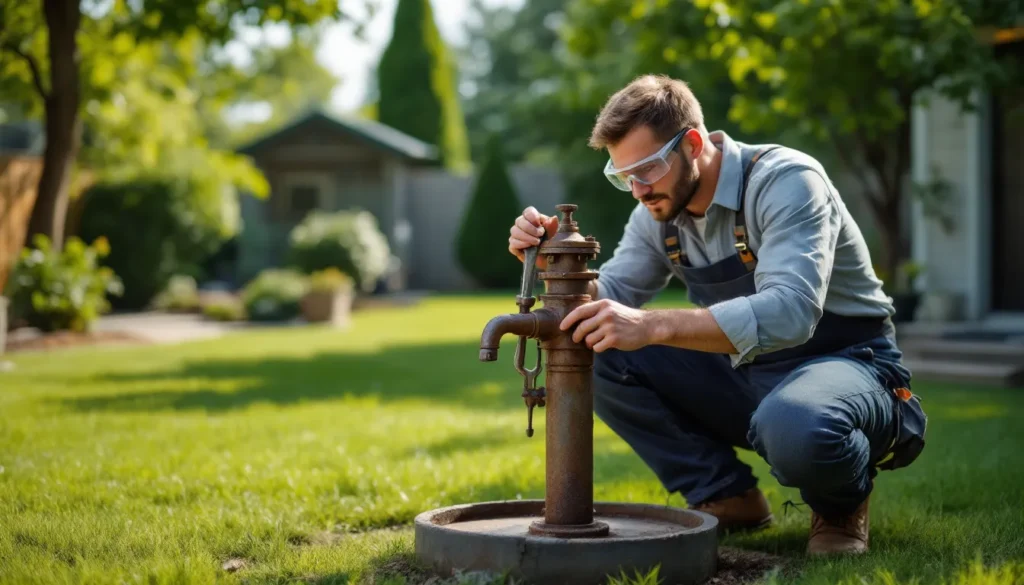Key Takeaways
- Importance of Priming: Properly priming your well water pump is crucial for maintaining a consistent water flow and preventing pump damage.
- Types of Pumps: Familiarize yourself with different well water pump types such as submersible, jet, solar, and hand pumps, as each has unique applications and installation requirements.
- Safety First: Always prioritize safety when priming by wearing protective gear, turning off the power, and ensuring a clear work area.
- Step-by-Step Process: Follow the specific steps for pump priming—turn off power, locate the priming port, fill the pump with water, and restart to ensure efficient operation.
- Common Issues: Be aware of potential priming issues such as low water levels, air leaks, and blockages, and know how to troubleshoot these problems for optimal pump performance.
- Routine Maintenance: Regularly inspect and maintain your pump system to extend its lifespan and ensure reliable water delivery to your home.
If you rely on well water for your home, knowing how to prime your pump is essential for maintaining a steady flow. A properly primed pump ensures that you get the water you need without interruptions. Whether you’re dealing with a new pump installation or troubleshooting an existing system, understanding the priming process can save you time and frustration.
Understanding Well Water Pumps
Well water pumps are vital for delivering water from underground sources to your home. Familiarizing yourself with the types and issues of these pumps enhances your ability to manage your water supply effectively.
Types of Well Water Pumps
- Submersible Pumps: Designed to operate underwater, these pumps push water to the surface. They are efficient for deep wells, typically ranging from 25 to 400 feet deep.
- Jet Pumps: Ideal for shallow wells (0 to 25 feet), jet pumps draw water using suction. They consist of a motor located above ground and are commonly used for residential applications.
- Solar Pumps: Powered by solar energy, these pumps offer an eco-friendly alternative for remote locations, making them ideal for off-grid systems.
- Hand Pumps: Used for emergency situations or in remote areas, hand pumps allow manual water extraction without electricity. They are practical and reliable for small-scale usage.
Common Pump Issues
- Loss of Prime: A common issue where the pump stops delivering water due to air entering the system. Regular checks on seals and connections help prevent this problem.
- Clogged Filters: Dirt and debris buildup in filters can restrict water flow. Cleaning filters regularly maintains pump efficiency.
- Overheating: This occurs when the pump runs continuously without water. Ensuring proper priming protects against overheating and motor damage.
- Electrical Failures: Issues in wiring or connections can disrupt power supply. Performing routine inspections helps identify electrical issues early on.
Understanding these pump types and their potential problems equips you with the knowledge to maintain your well water system effectively.
How to Prepare for Priming

Preparing for priming a well water pump requires attention to safety and the right tools. Follow these steps to ensure a smooth process.
Safety Precautions
- Always wear safety goggles to protect your eyes from potential splashes.
- Turn off the power to the pump to prevent accidental activation during priming.
- Ensure the work area is dry to avoid slips and falls.
- Use gloves to protect your hands from sharp edges and chemicals.
- Keep children and pets away from the work area to prevent distractions and accidents.
Tools and Materials Needed
- Wrench: A pipe wrench helps tighten or loosen fittings.
- Hose: Use a garden hose or a purpose-built pump hose for suction and discharge.
- Bailing bucket: Use this to remove excess water from the well if necessary.
- Sealant tape: Apply tape to threaded joints to prevent leaks.
- Suction pump: Consider a manual or electric pump for efficient priming.
- Water source: Ensure you have a clean water supply to fill the pump.
- Measuring cup: A measuring cup helps you accurately add water to the pump.
Gather these items to effectively prime your well water pump, ensuring the process runs efficiently and safely.
Step-by-Step Guide to Prime a Pump
Priming your well water pump involves a series of straightforward steps. Follow these instructions for effective priming.
Step 1: Turn Off the Power
Turn off the power to the pump at the circuit breaker. Ensure that all power sources are disconnected to prevent accidents during the priming process.
Step 2: Locate the Priming Port
Locate the priming port on your pump. This port is usually situated on top of the pump or along the side. Check the manufacturer’s manual if you’re unsure of its location.
Step 3: Fill the Pump with Water
Fill the pump with water through the priming port. Use a clean water source and fill it until the pump is nearly full. Avoid overfilling, as this can lead to spillage.
Step 4: Restart the Pump
Restart the pump after securing the priming port cap. Turn the power back on at the circuit breaker. Monitor the pump as it starts to check for any issues. If the pump doesn’t begin to draw water, repeat the process.
Troubleshooting Pump Priming Issues
Several issues can arise during the priming of your well water pump. Identifying and addressing them promptly ensures efficient operation and a consistent water supply.
Low Water Level Problems
Low water levels in the well can impede the pump’s ability to build pressure. Check the water level in the well. If it’s below the pump’s operational range, you may need to wait for rainfall or groundwater recharge. Installing a low-water cutoff switch can help prevent the pump from running dry, reducing the risk of damage.
Air Leaks and Blockages
Air leaks or blockages can disrupt the suction needed for priming. Inspect all hoses and fittings for cracks or loose connections, tightening them as necessary. Ensure that the priming port and suction line are clear of debris; use a vacuum or compressed air to clear any clogs. If issues persist, testing with a sealant may help identify minor leaks.
Conclusion
Successfully priming your well water pump is essential for maintaining a reliable water supply. By following the outlined steps and taking necessary precautions you can ensure your pump operates efficiently. Regular maintenance and attention to potential issues can save you from future headaches. Remember that each pump type may have unique requirements so staying informed about your specific system is key. With the right knowledge and tools you can confidently handle the priming process and keep your water flowing smoothly.

Hi, I’m Md Rofiqul, a gardening enthusiast who loves spending time in the garden and backyard. I enjoy caring for plants, growing flowers and vegetables, and creating a green space that feels peaceful and refreshing. Gardening is more than just a hobby, it’s a passion that connects me to nature and brings joy to my daily life. Living with plants inspires me to embrace simplicity, patience, and sustainability while making every day more colorful and rewarding.
